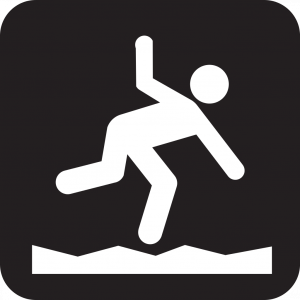Unit 4: Maintaining Balance

As an RN on MED floor, Jolene assesses each patient’s fall risk according to the Morse Fall Scale, provide a nursing diagnosis (ND) for fall risk, and implement fall precautions based on the ND. The human body typically operates in many positions that are not very stable and we must constantly use our muscles to adjust our body position and counteract the tendency of our bodies to fall over. We often refer to this skill as balance. For the most part balance is subconscious, but watching a toddler who has just learned to walk will provide an amplified idea of how much actual work is required for humans to stay upright. Throughout this unit and the associated lab we will investigate the various physics concepts that influence the stability of the body and our ability to maintain balance, including various types of forces, net force, torque, net torque, and types of stability. The learner outcomes for this unit are listed below, and below that are some related key terms to watch out for as you complete the chapter.
Learner Objectives
- Define center of gravity, support base, normal force (support force), static friction and kinetic friction.[2]
- Compare the relative torque applied to objects by various forces.[2]
- Identify the type of equilibrium exhibited by various structures and rank their relative stability.[2]
- Apply static equilibrium concepts to determine forces in physical situations, including normal force and friction.[3]
Key Terms and Conepts
A quantity representing the effect of applying a force to an object or system while it moves some distance.
a measure of the displacement from equilibrium an object can experience and still move back toward equilibrium
a point at which the force of gravity on body or system (weight) may be considered to act. In uniform gravity it is the same as the center of mass.
the outward force supplied by an object in response to being compressed from opposite directions, typically in reference to solid objects.
a force that acts on surfaces in opposition to sliding motion between the surfaces
a type of force supplied by an object in response to application of a different force on the object. Friction is a reactive force
the result of a force applied to an object in such a way that the object would change its rotational speed, except when the torque is balanced by other torques
a state of having not net torque and no change in rotational motion
a state in which a body tends to return to its original position after being disturbed
a state of equilibrium such that when the body is slightly displaced it departs further from the original position
a state in which a slight disturbance results in a restoring force that maintains stability, but a sufficiently large disturbance moves the system into an unstable region (or different metastable region)

